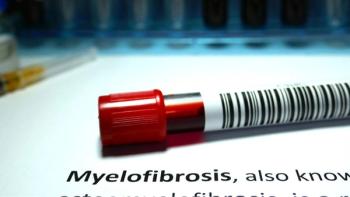
FDA Approves Blincyto for Patients with ALL Who Have Minimal Residual Disease
Blincyto (blinatumomab) was granted approval by the Food and Drug Administration (FDA) to treat patients who have B-cell precursor acute lymphoblastic leukemia (ALL), who are in remission but still have minimal residual disease (MRD).
Blincyto (blinatumomab) was granted approval by the Food and Drug Administration (FDA) to treat patients who have B-cell precursor acute lymphoblastic leukemia (ALL), who are in remission but still have minimal residual disease (MRD).
The decision follows an 8 to 4 vote in favor of the indication from the FDA’s Oncologic Drugs Advisory Committee (ODAC) in favor of an indication. The panel based its recommendation on the phase 2 BLAST study, in which Blincyto induced a nearly 80 percent complete MRD response rate in patients with MRD-positive ALL in hematologic complete remission (CR).
BLAST was a single-arm trial of up to four cycles of Blincyto for treatment of patients with B-cell precursor ALL in CR or CR with partial platelet recovery and MRD of at least 0.1 percent. The primary efficacy endpoint of BLAST was complete MRD response, defined as absence of detectable MRD using an assay with a sensitivity less than 0.01 percent after one cycle of Blincyto.
Of 116 patients who received at least one dose of Blincyto, the FDA identified 87 in CR with hematologic recovery and baseline MRD at least 0.1 percent, including 61 patients in CR1, 25 in CR2 and 1 in CR3. Sixty-nine patients (79.3 percent) achieved a complete MRD response within the first cycle.
The full analysis set from BLAST included 113 patients who were determined to be MRD-positive based on a measurement of 0.1 percent or more from an assay with a minimum sensitivity of 0.01 percent after at least weeks from their last chemotherapy treatment. Among this group, 88 (77.9 percent) achieved MRD CR within the first cycle.
Using the 87-patient FDA efficacy analysis set, the 18-month relapse-free survival (RFS) rate was 56 percent, and the estimated median RFS was 22.3 months. The estimated median RFS time in first CR at the time of treatment with Blincyto was 25.6 months, median RFS time in the second or third CR was 11.0 months. RFS time was numerically longer for patients in CR1 than for those in the second or third CR.
The estimated median RFS time was 23.6 months for patients with a complete MRD response and 5.7 months for the MRD-nonresponders.
A propensity score analysis for the patients in first remission with or without hematopoietic recovery in BLAST and in Study 20120148—a retrospective cohort study investigating the hematological RFS and overall survival (OS) in adult patients with Ph-negative BCP ALL in hematological CR with MRD—demonstrated that the RFS for the patients treated with Blincyto was significantly greater than in the historical controls (35.2 vs 8.3 months).
The estimated median RFS time with propensity score weighted analyses was 35.18 months for the Blincyto group and 8.3 months for the control group.
Data from the safety population of 137 patients treated with Blincyto for MRD-positive ALL came from BLAST and MT103-202, an exploratory, proof-of-concept, multicenter, open-label, single-arm trial of Blincyto for patients in first complete hematologic remission with MRD-positive B-cell ALL.
The FDA briefing document for the ODAC meeting noted that the safety profile for Blincyto in this setting was similar to what has been demonstrated with the treatment in patients with relapsed/refractory ALL. The median treatment exposure for the 137 patients was 55 days (range, 1-196). Ninety-one percent of patients had fever, 69 percent had a neurological toxicity, 7 percent had cytokine release syndrome, and 2 percent had sepsis.
Fatal adverse events occurred in three patients: fatal atypical pneumonia within 30 days of starting treatment; subdural hemorrhage at the site of a prior hemorrhage less than 30 days after the last dose of Blincyto; and sepsis.
Blincyto was previously approved by the FDA for the treatment of adult and pediatric patients with relapsed or refractory B-cell precursor ALL.




